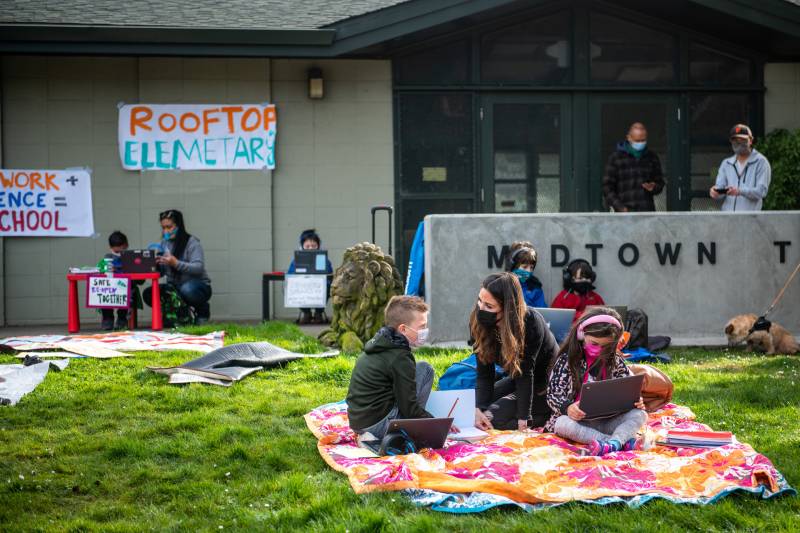Democratic state lawmakers split with Gov. Gavin Newsom on Thursday over the reopening of California public schools, offering a plan to resume in-person learning in April if coronavirus infection rates drop and teachers are offered vaccines.
With the spread of COVID-19 slowing, political pressure has mounted on lawmakers to bring California's youngest students back into classrooms. The legislative plan, Senate Bill 86, offers schools $6.6 billion to prepare classrooms and boost student learning after months of remote instruction.
“This is a major step, but it is not cause for taking a victory lap," said Assembly Speaker Anthony Rendon, D-Lakewood, in a statement. "This legislation moves us closer to our common goal of getting each student safely into an optimal learning situation. It provides a plan and it provides funding — both for safe school opening and for extra attention to learning recovery."
But the proposal was rebuffed by Newsom, who has pushed to reopen schools without requirements around vaccines.
"While the Legislature’s proposal represents a step in the right direction, it doesn’t go far enough or fast enough," Newsom said, in a statement. "I look forward to building on the growing momentum to get our schools open and continuing discussions with the Legislature to get our kids back in school as safely and quickly as possible."
Nevertheless, lawmakers are moving toward a Monday afternoon vote on the plan, which lays out guidance for schools to resume in-person instruction by April 15.
Students needing extra academic support, including foster and homeless youth, as well as chronically absent students, would be allowed to return under the state's strictest, "purple" coronavirus tier, which all but six counties are currently in.
Schools located in counties that fall under the state's "red" tier, which requires fewer than eight new daily cases per 100,000 residents, will be allowed to open their doors to grades K-6.
Falling infection rates could qualify more counties for the red tier in the coming weeks.
"We think with these elements in place, plus the fact that the counties are leaving the purple tier, going to the red tier and the yellow, that this is the right opportunity," said Assemblymember Kevin McCarty, D-Sacramento, who chairs the Assembly's budget subcommittee focused on education. "Frankly, it's time to get kids back learning."



